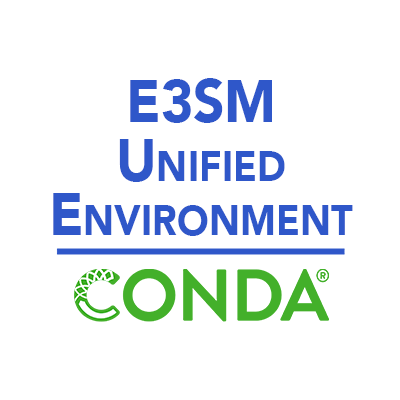E3SM-Unified Environment Update
A new version of E3SM-Unified (v1.3.1.1) has been released on the e3sm anaconda channel and has been installed on supported machines (Acme1 (LLNL), Anvil (ANL), Compy (PNNL), Cooley (ANL), Cori (NERSC), and Rhea (ORNL)).
E3SM-Unified is an anaconda environment that includes as much E3SM analysis software as possible.
Users of the supported machines can access the environment as usual by sourcing the script load_latest_e3sm_unified.sh, see the link for a path to that file on each machine. On Cori, the command is:
source /global/project/projectdirs/acme/software/anaconda_envs/load_latest_e3sm_unified.sh
Users can install the latest e3sm-unified on their own laptops with:
conda create -n e3sm-unified -c conda-forge -c defaults -c e3sm -c cdat/label/v82 python=3.7 e3sm-unified mesalib
Older Environments
E3SM-Unified has only been deployed with Python 3.7. Python 2.7 is no longer supported unless you wish to load one of the older environments. However, these older environments may be deleted as part of the next release. Please move to Python 3 ASAP. Because of the Python 2.7 concerns, no previous versions have been removed with this release, so 1.2.5, 1.2.6 and 1.3.0 remain available for now.
Environment with conda-forge mpich
The last release included an environment that built mpi4py with system MPI. This was not a success and did not help with most applications, so the current E3SM-Unified does not include mpi4py with system MPI support.
However, on some systems, conda-forge’s version of MPICH can be used (with mpirun, but not srun). This speeds up certain tasks like making mapping files with ESMF_RegridWeightGen and TempestRemap. I have added an experimental environment, activated with load_latest_e3sm_unified_mpich.sh, that has MPICH support. Please let me know if you are using this and how it goes.
For more information, see this E3SM Unified Environment page.
Funding
- DOE’s Office of Science, Biological and Environmental Research (BER), Earth System Model Development (ESMD), E3SM Project
Contact
- Xylar Asay-Davis, Los Alamos National Laboratory



